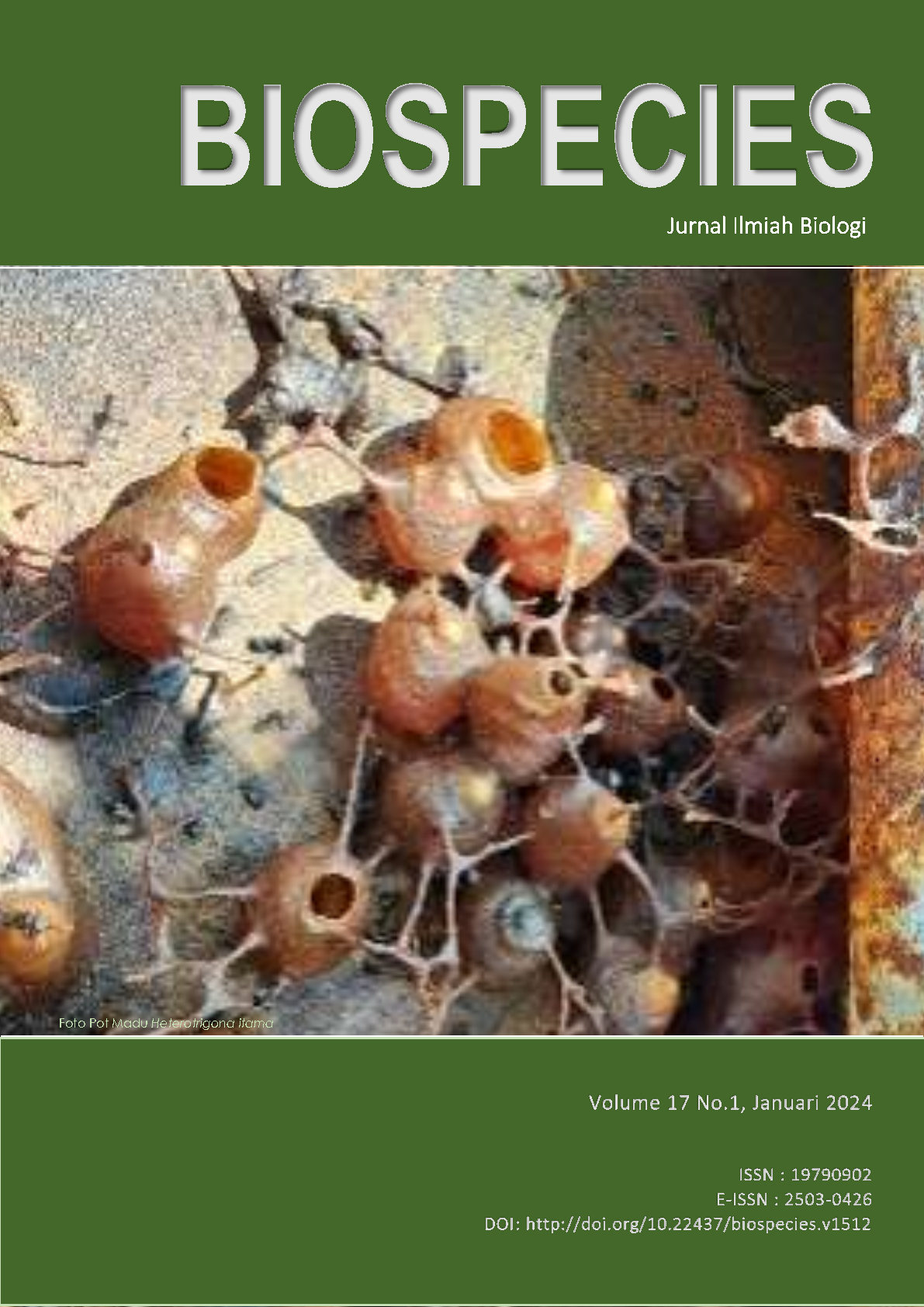The Distribution Of Chromium Contamination In Water, Sediment, And Aquatic Plants Along The Lower Opak River Flow
DOI:
https://doi.org/10.22437/biospecies.v17i1.31637Keywords:
Chromium, Piyungan Industrial Area, Aquatic PlantAbstract
Leather tanning activities in the Piyungan industrial region employ heavy metal chromium (Cr) as the primary component in the tanning process, resulting in heavy metal chromium contamination along the Opak River. Apart from its effect on water, chromium will be disseminated in sediment and biota in the Opak River, particularly aquatic plants with phytoremediation characteristics. The purpose of this study is to establish the distribution pattern of chrome pollution along the downstream bank of the Opak River utilizing water, sediment, and aquatic plant components. The study was done at five test sites in April, May, and June. The chromium concentration was then measured using the AAS (Atomic Absorption Spectrophotometer) technique and assessed using ANOVA. The test results show that the Opak River has been contaminated by the heavy metal chromium, with the highest distribution of contamination in sediment samples, followed by samples of water spinach plants (Ipomoea aquatica Forsk) with an average of 0.210 mg/L, and samples of water hyacinth plants (Eichornia crassipes Mart. Solms) with an average of 0.152 mg/L.



